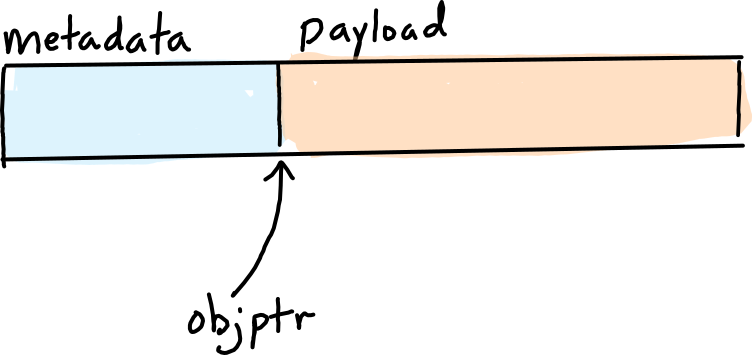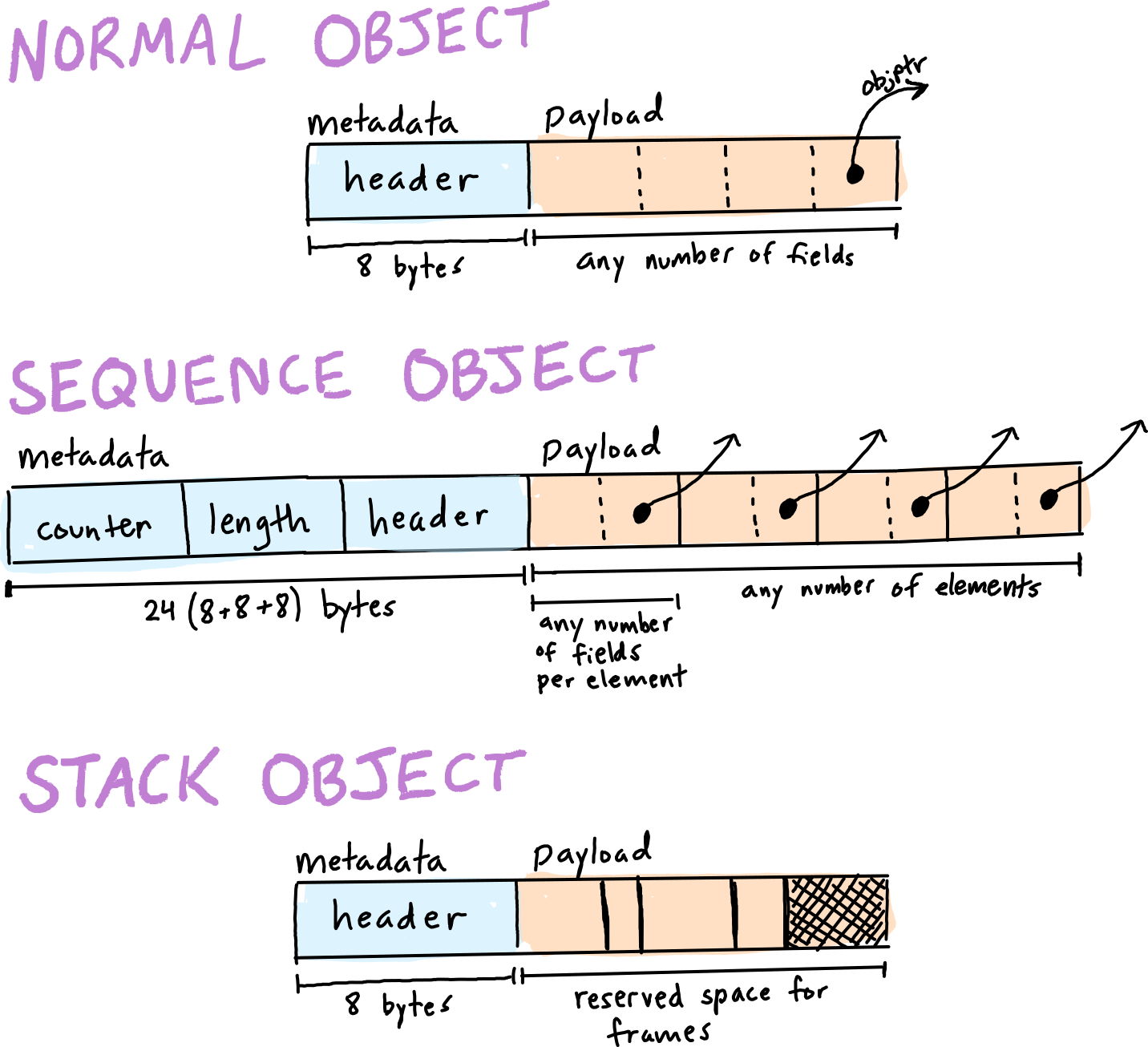Heap Objects
Heap-allocated memory objects, a.k.a. heap objects or just objects, are laid out carefully and tagged with GC metadata.
Every object has two components: a payload, and metadata. The payload is where the actual program data is stored. The metadata records information about the contents and size of the payload, as well as other info used by the garbage collector. The metadata usually consists of just a header, which is 8 bytes. (Exception: sequence objects have 24 bytes of metadata. See below.)
Pointers to objects always point to the beginning of the payload. These pointers are known as “object pointers”, and are identified by the C type objptr throughout runtime/gc/.

Object Types
The MPL runtime system uses three types of objects: normal objects, sequence objects, and stack objects. (See NORMAL_TAG, SEQUENCE_TAG, and STACK_TAG in the definition of the enum GC_objectTypeTag.) The type of every object is recorded in its header.

-
Normal objects are flexible: they may contain any number of fields, fixed at the time of allocation (and known at compile time). Each field contains either an object pointer (
objptr) pointing to another object, or it contains non-pointer data (e.g., integer, boolean, floating point number). Typically, normal objects correspond to tuples and/or records in the source program. For example, a source-level tuple of typeInt32.int * Real64.realwill be compiled into a normal object with a payload of 12 (=4+8) bytes. The metadata for a normal object is just a header. -
Sequence objects correspond to the source-level types
arrayandvector, containing any number of elements (fixed at the time of allocation and not necessarily known at compile time). Each element is essentially just the payload of a normal object, and all elements within a single sequence have exactly the same layout. The metadata of a sequence is larger: in addition to an 8-byte header, there is also an 8-byte length and an 8-byte “counter” (which may be used by the garbage collector to record how much of the sequence has been scanned.) -
Stack objects are call-stacks, manipulated by the compiled code, used to record local variables and arguments for function calls. See Call-Stacks. The metadata of a stack objct is just a header.
Inherited from MLton, there are also weak objects, but MPL does not currently support these. Weak objects have an object type tag (WEAK_TAG), but we should never see them. The garbage collector checks for this and will crash (see forwardHHObjptr) if it ever comes across a weak object.